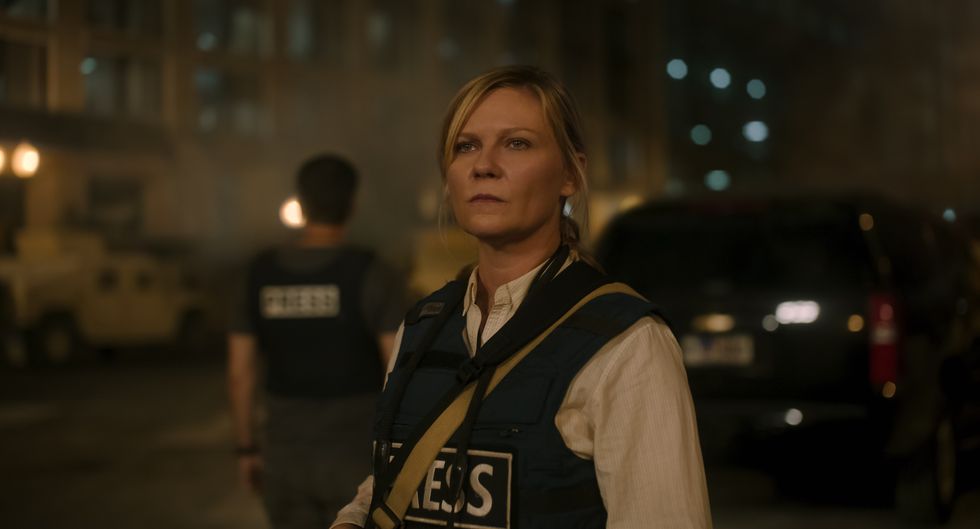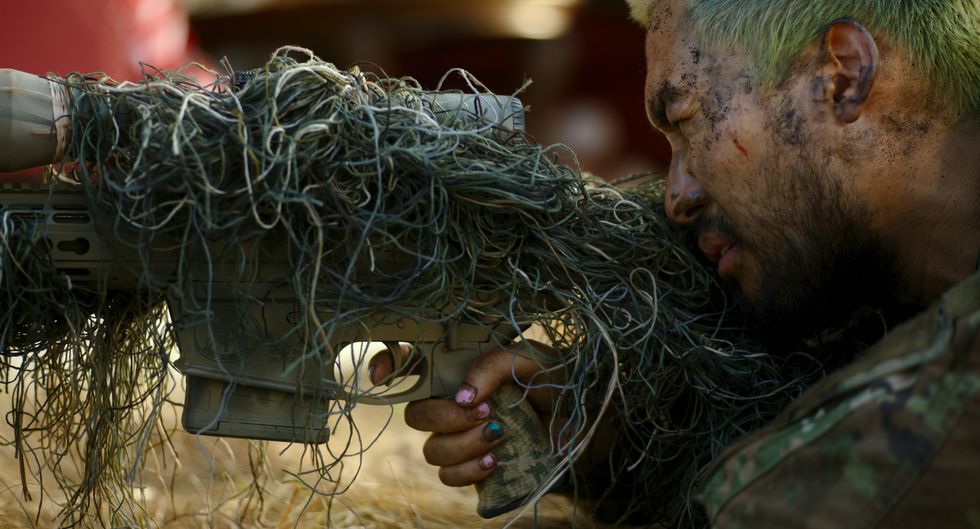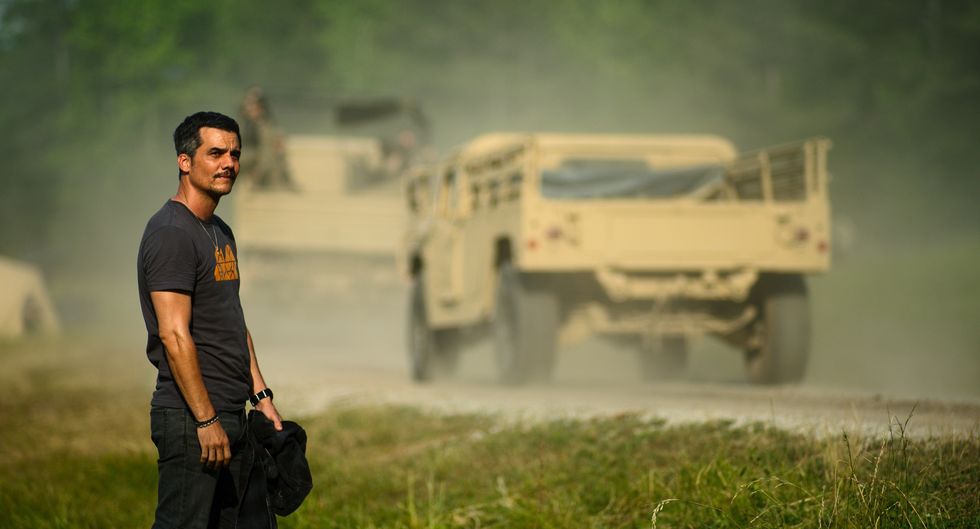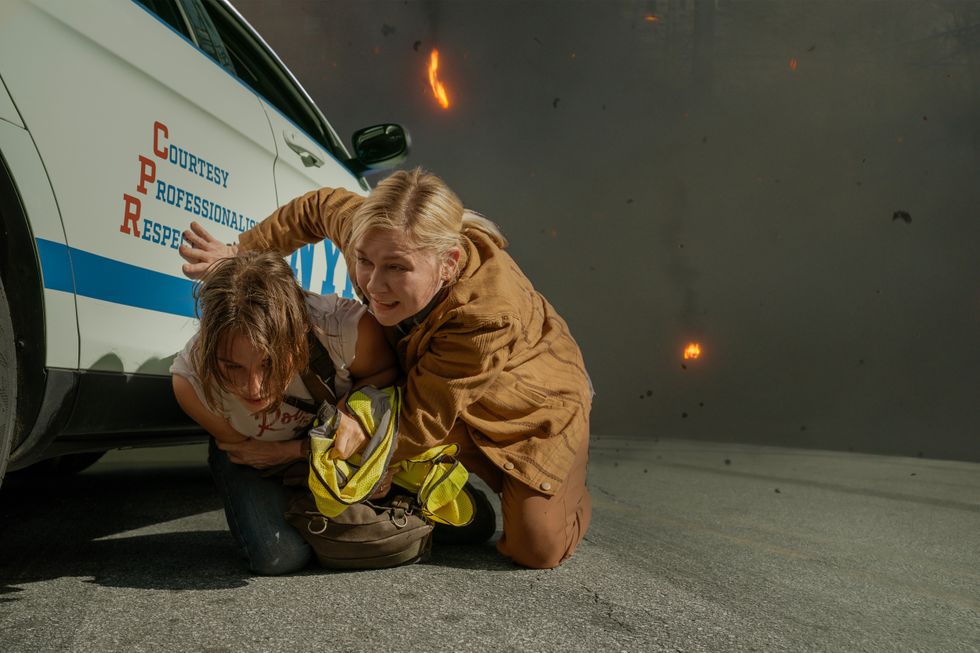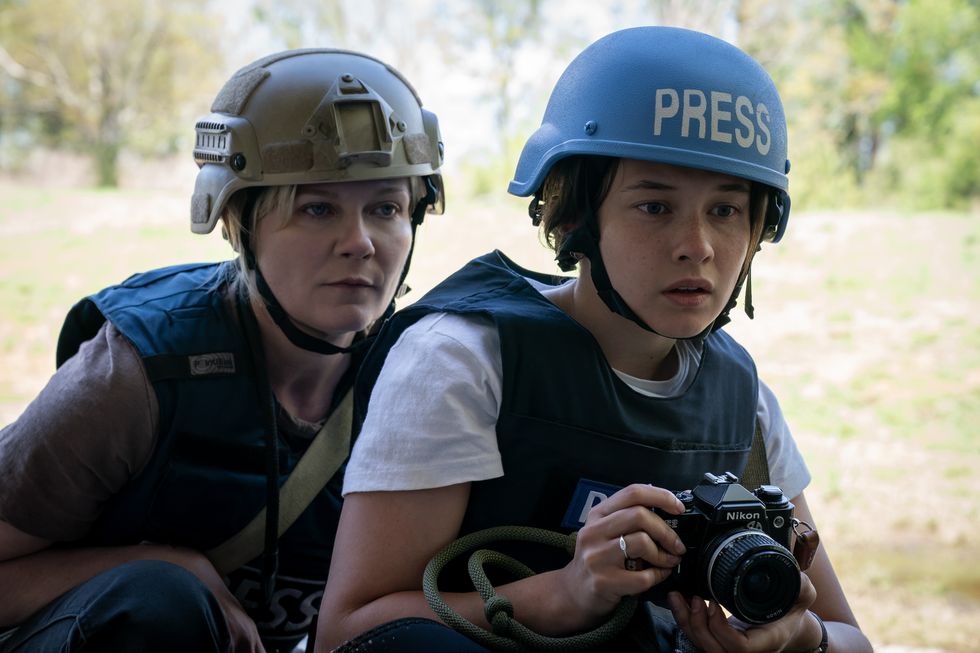SXSW-Winning 'The Work,' The Movie That Will Change How You Think About Prison
"I had no idea what prison was like."

When an inmate, a deacon, a Stanford-educated accountant, and an ex-convict biker decided to hold a four-day group therapy event between outsiders and inmates at Folsom Prison, James McLeary, the father of filmmaker Jairus McLeary, was one of the first outsiders invited to join.
His father asked him to attend. Jarius declined. "I had no idea what prison was like, or to be in a room with people who have committed serious crimes," McLeary told No Film School. Eventually, he felt compelled to understand the men behind bars. "After I did it once, I couldn't stop doing it, because it was such a pure interface of human beings."
"Just give up your social life for a couple years, if you have to. Do whatever you've got to do to make your film."
The Work has no talking heads and no explanations—the SXSW Grand Jury award-winning documentary is immersive filmmaking at its best. McLeary and his producer/brothers Miles and Eon McLeary sat down with No Film School to talk about getting access, shooting vérité in prison conditions, and how even the most seemingly immovable people can change.

No Film School: When you decided you wanted to make a film about this group therapy event in Folsom Prison, what was the process of winning people over, from the inmates to the prison staff?
Jairus McLeary: It was a very long process. The three guys that started the Inside Circle Foundation became family, like uncles. Rob Allbee is what you would call an OG. My dad's an OG. That means they experienced, in their early lives, a lot of the things the convicts have experienced. So they kind of juiced. I called Rob for a year straight and he was just kind of like, "Yeah, yeah, that sounds interesting. Okay, bye, son," and hang up the phone.
Once I finally got him to say yes, he began to talk to the shot-callers of the gangs who were in there. Finally, they said yes. They'd seen my brothers and I come in with our father. They said it makes them feel very good to see a family together, coming in to see them. Once they said yes, they handpicked people who they believed were ready to do this work, and let the world see. It's normally confidential, because once they step out of that room and go back down to the yard, many of the things they talk about inside the room, if they got out, could have adverse effects. They could get hurt or killed.
"It all takes place in a very large cinderblock room. There are echoes everywhere—you know, like screaming."
Then it was time to negotiate with the prison. My brother did a lot of that, having a legal background. It was a lot of back and forth with the current warden and administration at the time. Many times they said no.
Eon McLeary: They didn't know what they were saying yes to, because at no point are there any prison staff in the room. They eventually said yes, but it was a tenuous process.

NFS: Once you got the green light, what was your strategy to shoot?
McLeary: I had crew members that I've worked with on different films who I asked, "Is this something that you'd want to do? If it is, you have to go in and staff one of these four-day weekends. We're not going shoot. You guys are just going to come in, meet the convicts, see what the room looks like, and do the work that these guys do." It’s a frightening process to go from the parking lot to Folsom Prison. You have to walk through different gates in the prison, and then you have to walk through the yard, and you see everybody there. Then, you walk into the room, and there you are with regular people and the convicts.
It all takes place in a very large cinderblock room, so that presents a lot of problems. There are echoes everywhere—you know, like screaming. We had one stationary camera, which was giving a wide angle that Miles and myself would move. And then we had [two] DPs, Arturo Santamaria and Matthew Rudenberg, who would catch everything on the periphery.
NFS: What did you use to get the coverage you needed inside this large cement block room?
McLeary: At the time, RED cameras were coming out, and we thought it would be exciting to use to them. But the back end of that would've been a much more difficult process. Instead, our DP, Art, suggested we use the SONY PMW-EX3 as good little workhorse cameras. It's amazing—sometimes, we'll show this film and people will ask if we shot this last year. I’m like, "No, we shot this in 2010." The image still holds up.
We also had a great sound guy, Thomas Curley, who worked as the production sound mixer on Whiplash.
Eon McLeary: That was one of our main concerns. How are we going to capture the sound? You’re filming in this echo chamber and there are 80 people howling.
Miles McLeary: And 20 of them were mic'd.

Eon McLeary: We thought, if you don't have audio, then what is this? So our sound guy was amazing.
McLeary: It’s a state-run institution, so there were many frequencies that they used and we used remote sound. He had to go through a painstaking process.
Eon McLeary: I would get there with Thomas, our sound guy, at 4 AM. We'd go through the checklist of all of our equipment with the guards: cables, screws, these are all potential weapons. We had to walk the yard. We'd even have an escort with a sound cart and all this gear.
McLeary: Art [DP] would run from the front of the line to the back of the line to get these shots and a guard in the tower had his gun swaying back and forth. You're not supposed to run. The guard radioed the guard escorting him, and he was just like, "You need to tell that guy that I could shoot him right now. So tell him to stop running." Not that they would do that, but they needed us to know how serious this place is, and the jobs that they have to perform are not easy jobs.
NFS: What was the process of editing the footage to find the story?
McLeary: The decision we made from the beginning was that we would use three regular guys as a vessel for the audience. We make the audience go through [the group therapy] just as these three normal individuals, who they identify with, go through it. It would be an immersive process, and not be about answering any questions about what the program is. We could direct people to the Inside Circle Foundation if they wanted to find out more or become involved or donate. The state doesn't pay for it. Regular people from all over the world donate, and that's how the program keeps going.
[Co-director] Gethin Aldous came along and introduced us to Alice Henty and editor Amy Foote. It's an all-male event, so Amy was important. It was the first time that any woman watched the footage in its entirety. I knew that Amy was the perfect person, the perfect counterpoint to me. She was just like, "No, you have to keep this... this has to be there. Or, you need to get rid of that." She helped to make it translatable room, given it's such a closed society behind those bars.

NFS: What do you hope people come away with after getting this glimpse into the closed society of prison?
Miles McLeary: For me, part of what I wanted people to feel is that people can change. People can change. I'm convinced of that.
McLeary: The guy who started all this, Patrick Nolan, passed away in 2001. He used to be a member of the Skinheads. After a riot, he spent seven months in the hole, during which time he read a book called Man’s Search for Meaning by Victor Frankl. Frankl was an Austrian-Jewish psychiatrist who survived Auschwitz. When he came out of the hole, he said, "This stuff has got to stop." He was so moved by this man and this story, that he started the domino that set this entire program in motion. Yes, people can change.
NFS: What would be your best piece of advice to other filmmakers?
McLeary: Never give up. Literally: never give up. There are going to be times when you feel like you've made a horrible mistake. You've taken investors' money and people are depending on you.
I got a pep talk once from the former head of the Aryan Brotherhood, and it went something like, "What the hell are you doing? We trusted you. What the hell are you doing?" It was a wake-up call that I could never give up. I had different jobs and while I was [making this movie]. Just give up your social life for a couple years, if you have to. Do whatever you've got to do to make your film.
For more, see our complete coverage of the 2017 SXSW Film Festival.
No Film School's coverage of the 2017 SXSW Film Festival is sponsored by Vimeo.

